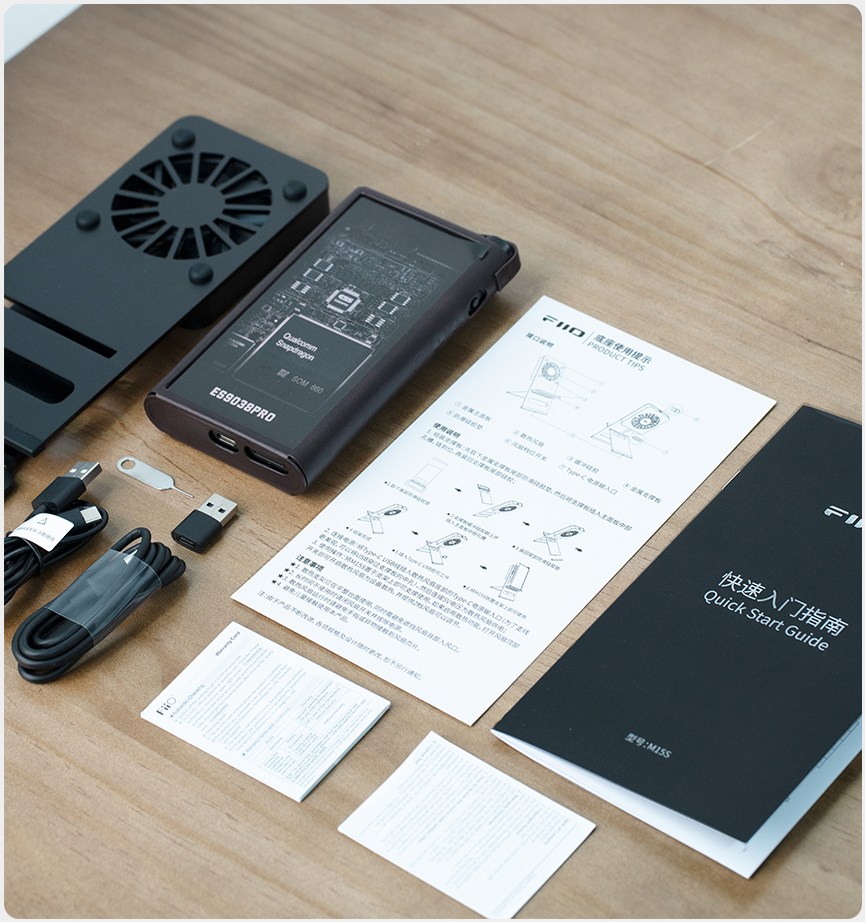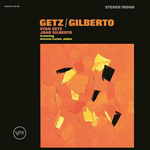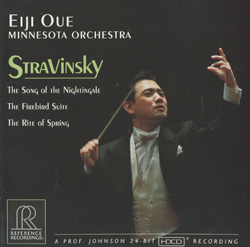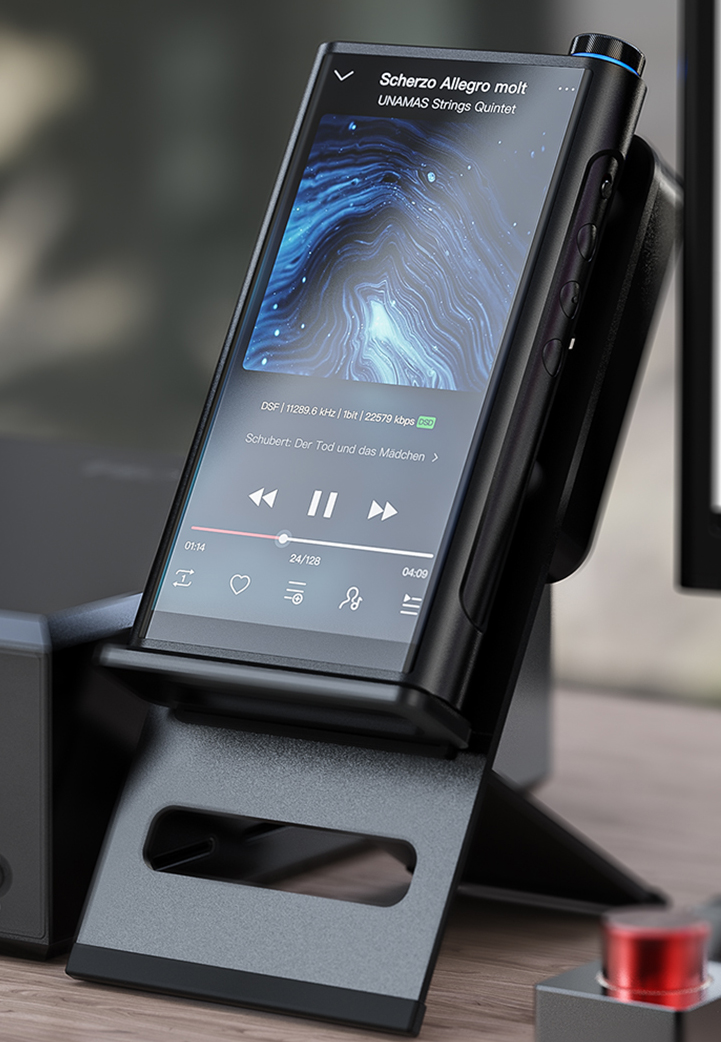Until I received my FiiO R7 Music Server my go-to player to burn in headphones or to act as digital source for DAC reviews (computers tend to be noisy over USB) has been my trusty FiiO M11 DAP (while the FiiO M11 Plus LTD offers some advantages, it also sucks up a lot of power), but FiiO is not a company to rest long, always pushing the envelope and developing new and better players, and in this vein is their new FiiO M15S Desktop/Portable Hi-Res Lossless Music Player. Slightly larger and with an almost half-inch larger display, the M15S boasts an 8-channel DAC and over twice the power output and includes a desktop dock with built-in cooling fan.
The FiiO M15S Desktop/Portable Hi-Res Lossless Music Player:
Some of the things that set the FiiO M15S Desktop/Portable Hi-Res Lossless Music Player apart from the pack beyond the FiiO DK3S dock, are the Dual Power Supply Mode, the Five Gain Levels, Six Operating Modes, the Eight Channel DAC chip which working in conjunction with a 4th-gen FPGA and Two NDK Femtosecond Crystal Oscillators allows for use of four D/A converters per channel, and Graphene Heat Dissipation Technology which lets the M15S run cool even when operating at high power outputs.
When connected to a quick charge power adaptor, the M15S’ dual power supply mode lets you choose between charging and desktop operation where in “Ultra High Mode” the power supply voltage is increased to ±7.6V and the battery is bypassed entirely allowing for greater output and increased dynamic headroom for driving hard to drive headphones while increasing battery life. This is accommodated by implementing an overbuilt fully separated digital power supply, that effectively reduces crosstalk and interference, along with a Multi-stage analog power supply, providing high-precision and low-noise for early signal processing and a multi-voltage servo power supply for the headphone amp, capably driving low and high-impedance loads.
Four gain levels are available when operating in battery mode, Low, Medium, High, and Over-Ear Headphone, and when connected to USB power, a fifth Enhanced Over-Ear Headphone gain level is made available. There are also six operating modes:
- Pure Music mode: FiiO exclusive mode, for immersive music.
- Android mode: Freely use third-party apps, including those of streaming services.
- AirPlay mode: wirelessly connect to iOS devices like iPhone/iPad, with a sound quality boost.
- Roon Ready mode: Roon Ready certified, for serious music lovers.
- USB DAC mode: as a DAC when connected to a computer/phone, for greatly improved sound.
- Bluetooth receiver mode: supports SBC, AAC, aptX, aptX HD, aptX LL, LDAC, and aptX Adaptive, for convenient quality wireless sound.
A full, uncut desktop ES9038PRO DAC chip with eight independent D/A converters is employed in the M15S allowing each channel to use four D/A converters in parallel to form a fully differential output. Audio data is passed through a FiiO-developed 4th-gen FPGA with phase-locked loop technology, which works together with two custom Japanese NDK femtosecond crystal oscillators to provide a high-precision and low-jitter unified clock source for the entire audio architecture.
An advanced and highly efficient heat dissipation design allows the M15S to maintain stable temperatures and continuously deliver high power output which includes a stainless steel battery compartment, to quickly dissipate battery heat, low temperature-drift and high-precision thin-film resistors and capacitors, that can stably cope with temperature swings, and a dedicated metal shield, graphene, and high thermal conductivity silica gel over hotspots for maximum heat dissipation.
In order to shield from interference as much as possible, the M15S employs a nickel-copper shield that shields the analog portion of the audio circuit as well as the main SoC (system on a chip) to ensure the purity of the analog signals traveling through the circuit. In addition, stacked onto the main shield are other heat dissipation and shielding materials as well as wave-absorbing paper.
The M15S features a multi-stage audio circuit complete with I/V (impedance/voltage conversion), LPF (low pass filter), gain adjustment, and amplifier sections. High-precision and low-noise film resistors are used to ensure more accurate signal reproduction and channel balance. Within the LPF part of the circuit are Panasonic low-loss metalized film capacitors that guarantee extremely low harmonic and phase distortion.
The M15S wireless capabilities include AirPlay, DLNA streaming and transmission, as well as Bluetooth 5.0 handled by a Qualcomm QCC5124 chip that has the capably to handle 2-way Bluetooth 5.0 with SBC, AAC, aptX, aptX HD, LDAC, LHDC supported for transmission and SBC, AAC, aptX, aptX HD, aptX LL, LDAC, aptX Adaptive supported on the reception side.
For accessories, the M15S comes with the following:
- Leather Case*1
- DK3S heat dissipation dock*1
- PD charging/data cable*1
- USB power cable*1 (for heat dissipation dock power supply
- USB adapter*
- Quick start guide*1
- Warranty card*1
- Tip card*1
- micro SD card removal pin*1
- GPL manual*1

Living with the FiiO M15S Desktop/Portable Hi-Res Lossless Music Player:
The first thing I noticed in setting up the FiiO M15S Desktop/Portable Hi-Res Lossless Music Player was there is a slot in the leather case for the micro SD card so you don’t have to take the player out of the case to change the card. This has always been a frustration for me especially with the M11 as I use the clear plastic case and it is fairly difficult to take the unit out of and replace into. That being said the M15S comes out of the case fairly easily out of the case which has a Velcro tab on the back. The loop over the volume control is held in place with a magnetic clasp. There is also a large cutout on the back with a metal grill to allow for cooling via the desktop dock. The dock was easy to assemble as it was made of two pieces that slip together, the only trick being trying to get the rubber gasket that holds it in place through the hole. I burned it in using my HiFiAudio.Guru playlist on Qobuz (https://open.qobuz.com/playlist/10673532) and the HIFIMAN AUDIVINA Closed-Back Planar Magnetic Studio Headphones which were in for review (two stones one bird, so to speak).
There are three headphone outputs on the top of the unit, one 3.5mm TRS single-ended and two balanced, one 2.5mm TRRS and one 4.4mm TRRRS. I found the balanced outputs will run concurrently (a little circle lights up to indicate which is plugged in or if both are) though the balanced and single-ended will not. Also both the single-ended and the balanced outputs are selectable as line outputs, and the 3.5mm output doubles as your coaxial S/PDIF out.
The M15S comes with a slew of digital filters:
- Fast roll-off, linear phase filter
- Slow roll-off, linear phase filter
- Fast roll-off, minimum phase filter
- Slow roll-off, minimum phase filter
- Apodizing, fast roll-off, linear phase filter
- Hybrid, fast roll-off, minimum phase filter
- Brickwall filter
Those who like an artificially large soundstage will probably like the Brickwall filter as the emphasized pre-ring and post-ring will give this effect, though it will also sound harder, more solid-state, and I believe (though have no way to verify) creates increased TIMD (transient intermodulation distortion), at least it hurts my ears. The selection is unusual enough that I felt a need to test them. I preferred the slow roll-off, minimum phase filter and the “all to DSD” mode which may bypass the filter altogether, at any rate, the differences were subtle and in “all to DSD” almost non-existent.

I began my listening tests with my harder-to-drive headphones, starting with the Dan Clark Audio EXPANSE Open Back Planar Magnetic Headphones using the 4.4mm balanced output. As a tribute to the late Astrud Gilberto, I searched out “The Girl from Ipanema” by Stan Getz and João Gilberto (“Getz/ Gilberto” – 24-bit/192kHz – Qobuz) on Qobuz and the M15S performed superbly keeping the bass well under control offering up a performance that was musical and seductive, with a natural tonal balance, and even in “low gain” the dynamics were excellent, though “medium gain” was probably more appropriate despite having sufficient volume (though I did have it turned up most of the way, I did not find myself listening at a higher volume when I selected the correct gain setting).

Performance was so good with the EXPANSE that I had no qualms stepping over to the HIFIMAN HE6se which is my hardest-to-drive headphone. Queuing up Speakers Corner Quartet’s “Further Out Than The Edge” (24-bit/44.1kHz – Qobuz), again I was able to get excellent dynamics out of lower than expected gain settings, this time “medium gain”, but I quickly moved up to “ultra high gain” which put loud at about 107 out of 120 with this electronica/jazz/hip-hop quartet, easily scaling the amped up bass and percussion. Once again the result was wonderfully musical despite the HE6se’s heavy lean into the top end. Even with the USB power disconnected, I was able to get acceptable power levels out of the M15S though it did indeed perform better plugged in.

Swapping out for the FiiO FH9 Seven Driver Hybrid In-Ear Monitors at “low gain” I put on Bully (“Lucky For You” – 24-bit/48kHz – Qobuz) for some heart-pounding modern grunge. “Hard to Love” had hard-hitting dynamics, with snap and impact to the drums.

While the M15S and FH9 appear to be a perfect combination for most music, it did bring out the background noise in “The Firebird Suite” as performed by Eiji Oue and Minnesota Orchestra (“Stravinsky” – DSD) but otherwise, the tonal balance and timbre of instruments were spot on with exceptional dynamics and a large soundstage. The placement of the musicians and the air around them were impressive for a playback system costing less than $1,600.
Conclusions on the FiiO M15S Desktop/Portable Hi-Res Lossless Music Player:
If I didn’t already have the FiiO R7 the FiiO M15S Desktop/Portable Hi-Res Lossless Music Player would probably be my first choice to use as a desktop music server, especially with the addition of the desktop dock. As a DAP the M15S is hard to compete with musical and powerful, able to drive most headphones, yet quite enough for the most finicky IEM. As one would expect and as mentioned above, the FiiO M15S and the FiiO FH9 have incredible synergy and would represent an ideal portable listening experience. It is clear with this latest entry, FiiO has reached a new level of performance and usability with the M15S and I can’t recommend this product enough.
Price: $999.99
Manufacturer’s Website: https://www.fiio.com/m15s
| General Specifications | |||
| Name/Model | M15S | Hardware | Soc: Snapdragon 660, DAC: ES9038PRO, Amplifier: OPA926 * 2, Crystal Oscillator: NDK Femtosecond Crystal Oscillator * 2 |
| working mode | Android mode/Pure music mode/USB DAC mode/Bluetooth receiving mode/AirPlay mode /Roon Ready | Weight | about 345g |
| color | Black | Volume Control Type | button control or knob control |
| Size | about 140x80x18.9mm | Body Memory/User Free Space (ROM) | 64GB/About 46GB |
| screen | 5.5-Inch full-fit screen (resolution 1440 * 720) | Gain | Ultra high (Quick charge)/Super high/high/medium/low |
| RAM | 4GB | Recommended headphone impedance | 8 ~ 150Ω (single-ended output)/8 ~ 350Ω (balanced output) |
| Storage expansion | Single TF card slot, up to 2TB (theoretically) | Channel balance | L20~ R20 (0.5dB per level) |
| Buttons and interfaces | |||
| Button | Physical key | USB | TYPE C USB3.0 (charging/data transmission) |
| Headphone output | 3.5mm single-ended | Line output port | 3.5 mm (shared with PO port) |
| Balanced output | 2.5mm + 4.4mm balanced | Balanced line output interface | 2.5mm balance + 4.4mm balance (shared with PO ports) |
| coaxial interface | 3.5 mm (shared with PO port, up to 384kHz-32bit/DSD128) | ||
| Features | |||
| WiFi | 2.4GHz/5GHz, supports DLNA transmission and reception, AirPlay, WiFi transmission, Roon Ready, etc. | Bluetooth Transmitter (5.0) | SBC, AAC, aptX, aptX HD, LDAC, LHDC |
| Bluetooth reception (5.0) | SBC, AAC, aptX, aptX HD, aptX LL, LDAC, aptX Adaptive | FiiO Link | Android support WiFi and Bluetooth control, iOS support WIFI control |
| MQA | Global 8x decoding | All to DSD | support |
| Double click to wakeup | support | USB Audio | 768kHz-32bit/DSD512 (DoP/D2P/Native) |
| Maximum supported sampling rate | Native: Up to 384kHz-32bit/DSD256 | Car mode | can follow the car USB automatic switch machine |
| USB DAC up to 384kHz-32bit/DSD256 | EQ | 10-band dynamic EQ adjustment (± 12dB), built-in 8 preset EQ, support custom EQ | |
| Power-off timer | Support power saving shutdown/sleep shutdown | Navigation control | Gesture control/2-Bottom navigation/3-Bottom navigation |
| Firmware Upgrade | Support local storage upgrade + TF card local upgrade + OTA push upgrade | ||
| Power Parameters | |||
| power supply | Support QC3.0, QC4.0 and PD2.0 and PD3.0 quick charge | Battery Capacity | 6200mAh |
| charging time | About 3.5 hours (QC3.0 quick charge mode) | Standby Time | >1000h |
| Battery life and test conditions | |||
| 3.5mm headphone output: 10.5 hours | |||
| Volume | 40 | Gain | super high |
| Screen status | Off | Tracks formats | MP3 44.1kHz/16bit |
| EQ | Off | Load | 32 Ω |
| 2.5mm +4.4mm balanced output: 9 hours | |||
| Volume | 29 | Gain | super high |
| Screen status | Off | Play tracks and formats | MP3 44.1kHz/16bit |
| EQ | Off | Load | 32 Ω |
| Audio Parameters | |||
| PO output performance parameters (Ultra high) | |||
| Output power 1 | L+R≥535mW+535mW(16Ω / THD+N<1%) | Output impedance | ≤ 1.4 Ω(32 Ω) |
| Output power 2 | L+R≥580mW+580mW(32Ω /THD+N<1%) | THD+N | ≤ 0.0005%(1kHz/32Ω) |
| Output power 3 | L+R≥93mW+93mW(300Ω / THD+N<1%) | SNR | ≥ 122.5dB(A weighted) |
| Crosstalk | ≥ 80dB(1kHz/32Ω) | Noise floor | ≤ 3.2 μV(A weighted) |
| Frequency response | 20Hz~20kHz(-0.15dB) | Peak output voltage | 15.0 Vpp |
| 20Hz~50kHz(-1.0dB) | |||
| PO output performance parameters (Super high) | |||
| Output power 1 | L+R≥475mW+475mW(16Ω / THD+N<1%) | Output impedance | ≤ 1.4 Ω(32 Ω) |
| Output power 2 | L+R≥395mW+395mW(32Ω /THD+N<1%) | THD+N | ≤ 0.0005%(1kHz/32Ω) |
| Output power 3 | L+R≥57mW+57mW(300Ω / THD+N<1%) | SNR | ≥ 121.0dB(A weighted) |
| Crosstalk | ≥ 80dB(1kHz/32Ω) | Noise floor | ≤ 3.2 μV(A weighted) |
| Frequency response | 20Hz~20kHz(-0.15dB) | Peak output voltage | 11.7 Vpp |
| 20Hz~50kHz(-1.0dB) | |||
| Line output performance parameters | |||
| THD+N | ≤ 0.00034%(1kHz/10kΩ) | SNR | ≥ 124.0dB(A-weighted) |
| Crosstalk | ≥ 106dB(1kHz/10kΩ) | Noise floor | ≤ 1.2 μV(A weighted) |
| Frequency response | 20Hz~20kHz(-0.1dB) | Line Output Level | 2.0Vrms(1kHz/10kΩ) |
| 20Hz~50kHz(-0.7dB) | |||
| Balanced headphone output performance parameters (Ultra high) | |||
| Output Power 1 | L+R≥531mW+531mW(16Ω / THD+N<1%) | Output impedance | ≤ 2.3 Ω(32 Ω) |
| Output Power 2 | L+R≥1200mW+1200mW(32Ω /THD+N<1%) | THD+N | ≤ 0.00075%(1kHz/32 Ω) |
| Output Power 3 | L+R≥368mW+368mW(300Ω /THD+N<1%) | SNR | ≥ 121.5dB(A weight) |
| Degree of separation | ≥105.0dB(1kHz/32Ω) | Noise floor | ≤ 5.2 μV(A weighting) |
| Frequency response | 20Hz~20kHz(-0.15dB) | Peak output voltage | 30.0Vpp |
| 20Hz~50kHz(-1.0dB) | |||
| Balanced headphone output performance parameters (Super high) | |||
| Output Power 1 | L+R≥531mW+531mW(16Ω / THD+N<1%) | Output impedance | ≤ 2.3 Ω(32 Ω) |
| Output Power 2 | L+R≥990mW+990mW(32Ω /THD+N<1%) | THD+N | ≤ 0.00075%(1kHz/32 Ω) |
| Output Power 3 | L+R≥226mW+226mW(300Ω /THD+N<1%) | SNR | ≥ 120.5dB(A weight) |
| Degree of separation | ≥105.6dB(1kHz/32Ω) | Noise floor | ≤ 5.2 μV(A weighting) |
| Frequency response | 20Hz~20kHz(-0.15dB) | Peak output voltage | 23.7 Vpp |
| 20Hz~50kHz(-1.0dB) | |||
| Balanced line output performance parameters | |||
| THD+N | ≤ 0.00031%(1kHz/10 kΩ) | SNR | ≥ 127.7dB(A weight) |
| Crosstalk | ≥ 106dB(1kHz/10 kΩ) | Noise floor | ≤ 1.7 μV(A weighting) |
| Frequency response | 20Hz~20kHz(-0.1dB) | Line output level | 4.0Vrms(1kHz/10kΩ) |
| 20Hz~50kHz(-0.7dB) | |||
| Audio format support | |||
| Lossless: | DSD:DSD64/128/256(“.iso”,”.dsf”,”.dff”),DST iSO DXD:352.8K/24bit APE FAST/High/Normal:384kHz/24bit(MAX) APE Extra High:192kHz/24bit(MAX) APE Insane:96kHz/24bit(MAX) Apple Lossless:384kHz/32bit(MAX) AIFF:384kHz/32bit(MAX) FLAC:384kHz/32bit(MAX) WAV:384kHz/32bit(MAX) WMA LOSSLESS:96kHz/24bit(MAX) DTS: 192kHz/24bit(MAX) MQA:Full Decoderer | ||
| Lossy compression: | MP3,OGG,WMA,AAC and other formats | ||















Want to join discussion?
Feel free to contribute!